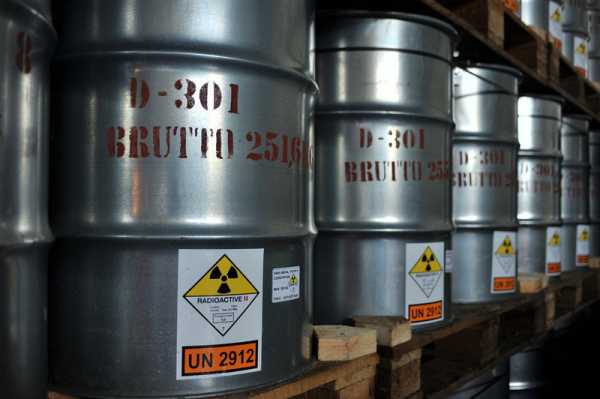
Several inherent risks of nuclear energy, from the disaster potential, to waste management over hundreds of thousands of years, or uranium mining, were not properly addressed in the report commissioned by the European Commission (Photo: IAEA Imagebank)
After a year-long fight over the classification of fossil gas and nuclear energy under the EU taxonomy, the Delegate Act defining whether they’re considered as a sustainable investment will finally be released next week by the European Commission.
Yet a last major battle is taking place this Thursday (16 December) in Brussels. The 27 EU leaders will have a final word at the last European Council of the year on whether fossil gas and nuclear should be part of the EU list of environmentally-sustainable economic activities.
The battle lines are drawn: on one side France supporting nuclear with Poland, the Czech Republic and other Eastern partners who, for the most part, are for the inclusion of fossil gas in the EU green labelling; on the other side Italy, Spain, Denmark, Austria and Luxembourg, who are clearly opposed to considering any of them as a sustainable investment.
Paradoxically, central and eastern European governments have been very vocal in advocating for the inclusion of fossil gas on the EU green investment list, while they have most at stake in terms of climate, energy prices and energy sovereignty.
Debunking the gas fairy tale
Eastern Europe’s love affair with climate-wrecking fossil gas lies in the fable that it can help them to break with an even more toxic relationship, the one with coal.
If we consider the whole gas supply chain including methane emissions, whose impact on climate change is 84 times greater than CO2, generating power with gas can turn even worse for the climate than coal.
This is why the inclusion of gas-fired power would seriously compromise the EU Sustainable Taxonomy’s ability to act as an independently and scientifically designed tool for guiding investment into environmentally sustainable activities. Accordingly, the IEA net-zero by 2050 pathway stresses that there is no remaining carbon budget for new gas investments at all and that existing gas-fired power plants will have to be phased out by 2035 in the OECD and 2040 globally.
The Paris Agreement Compatible Scenario produced by EEB and CAN Europe shows that an immediate leap-frogging from coal to renewable electricity generation is technically feasible without fossil gas and nuclear. Now that gas prices are reaching record peaks and driving up the cost of all energy, it is time to bet on solar and wind energy, whose generation costs are cheaper than those of coal and fossil gas.
This energy model also proves that 100-percent renewables electricity supply is possible by 2040 through a rapid mobilisation of energy savings potentials, accelerating deep renovation of buildings and modernisation of industrial production processes, greater use of circular economy solutions, and a swift ramping up of domestic renewable energy with smart grids and battery storage.
Moreover, as long as fossil gas remains a part of central and eastern countries’ energy mix, their citizens will continue to suffer electricity price shocks due to global speculation, volatility and geopolitical factors (more than 40 percent of EU’s gas import comes from Russia). Despite this well-known energy context, some Eastern EU leaders are trying to instrumentalise the current energy price crisis to call for more fossil gas and less climate action. The taxonomy should not be a vehicle for this.
Nuclear gamble ‘does harm’
The potential contribution of nuclear power to reducing greenhouse gas emissions is as clear as its non-sustainable nature due to severe safety risks, environmental pollution, huge time investment and the unsolved waste problem.
Several inherent risks of nuclear energy, from the disaster potential, to waste management over hundreds of thousands of years, or uranium mining, were not properly addressed in the broadly-criticised report of the Joint Research Centre commissioned by the European Commission to back a decision on the EU taxonomy. It seems obvious that the current nuclear technology cannot ensure the “do no significant harm” EU principle.
Economically, investing in new nuclear plants does not pay off. Newly added capacities are not realistic due to high investment, competition of renewables and time costs.
For example, the Catalan government estimated that with the same budget of 19 billion euros used for the construction of the new nuclear reactor Flamanville 3 in France, they could invest in photovoltaic solar energy that would generate around 5 times more electricity and be operational in a quarter of the time.
Granting nuclear and fossil gas the label of sustainability would undermine the EU’s climate targets, divert much-needed green investments in Central and Eastern Europe and jeopardise the credibility of the entire European Green Deal.
The EU taxonomy should create clarity for companies, investors and policymakers about which activities can be considered sustainable, prevent greenwashing, and help shift investments where they are most needed.
Weak European sustainable financing rules would particularly impact those economies lagging behind in the transition toward climate neutrality. The EU taxonomy is therefore one of the most important policy tools to get right and enable a post-fossil energy transition in the central and eastern sides of the bloc.
Source: euobserver.com